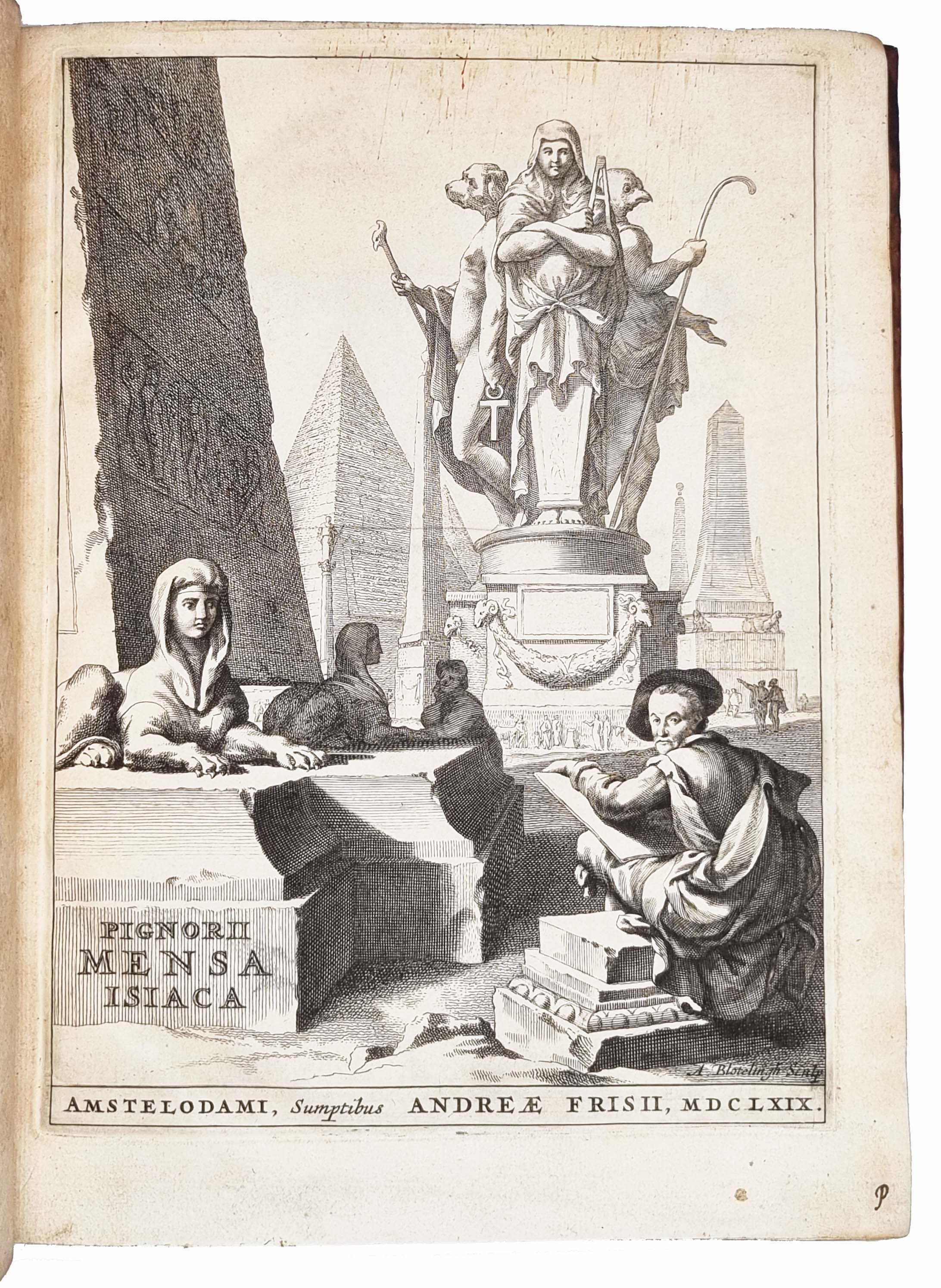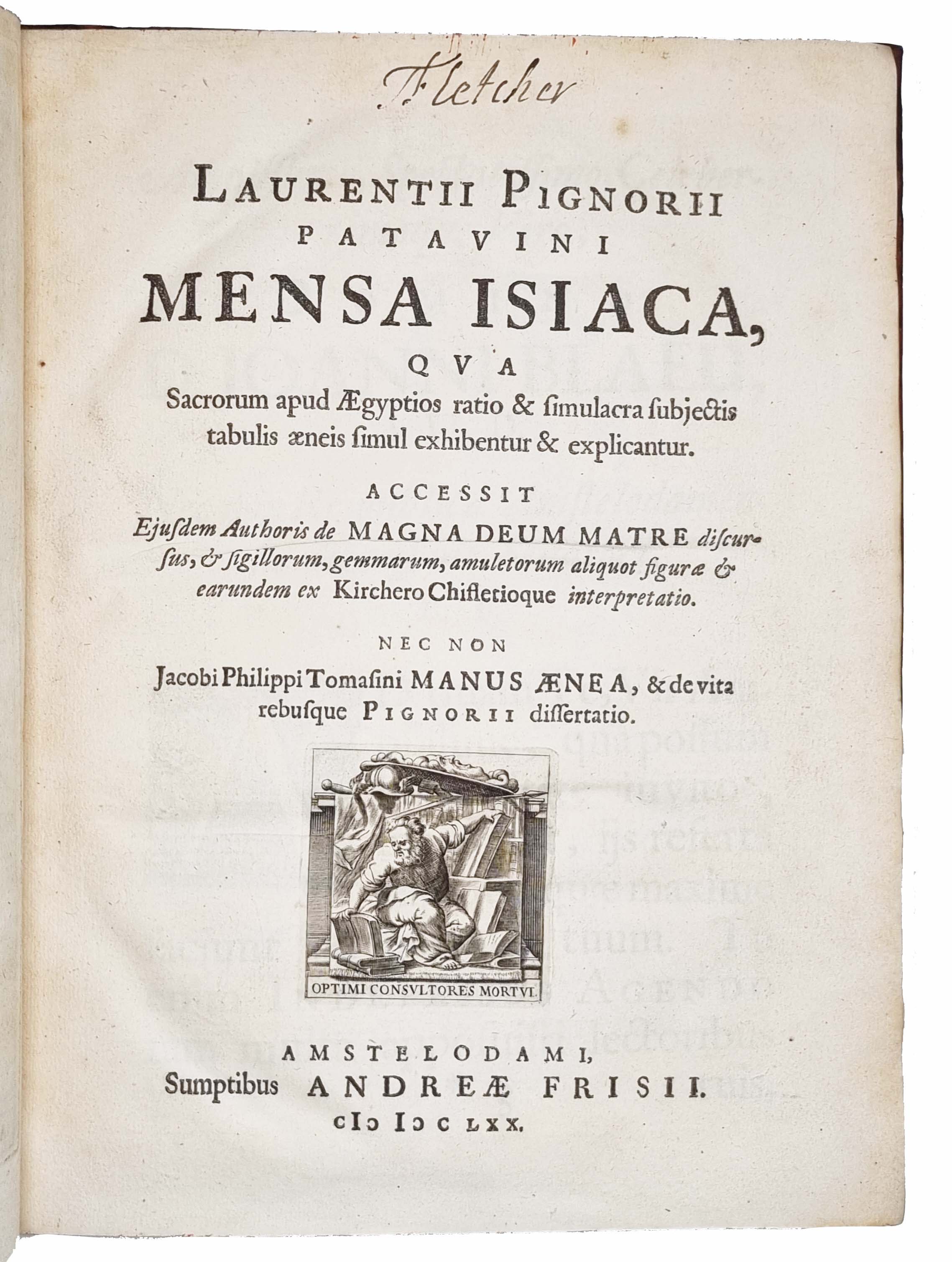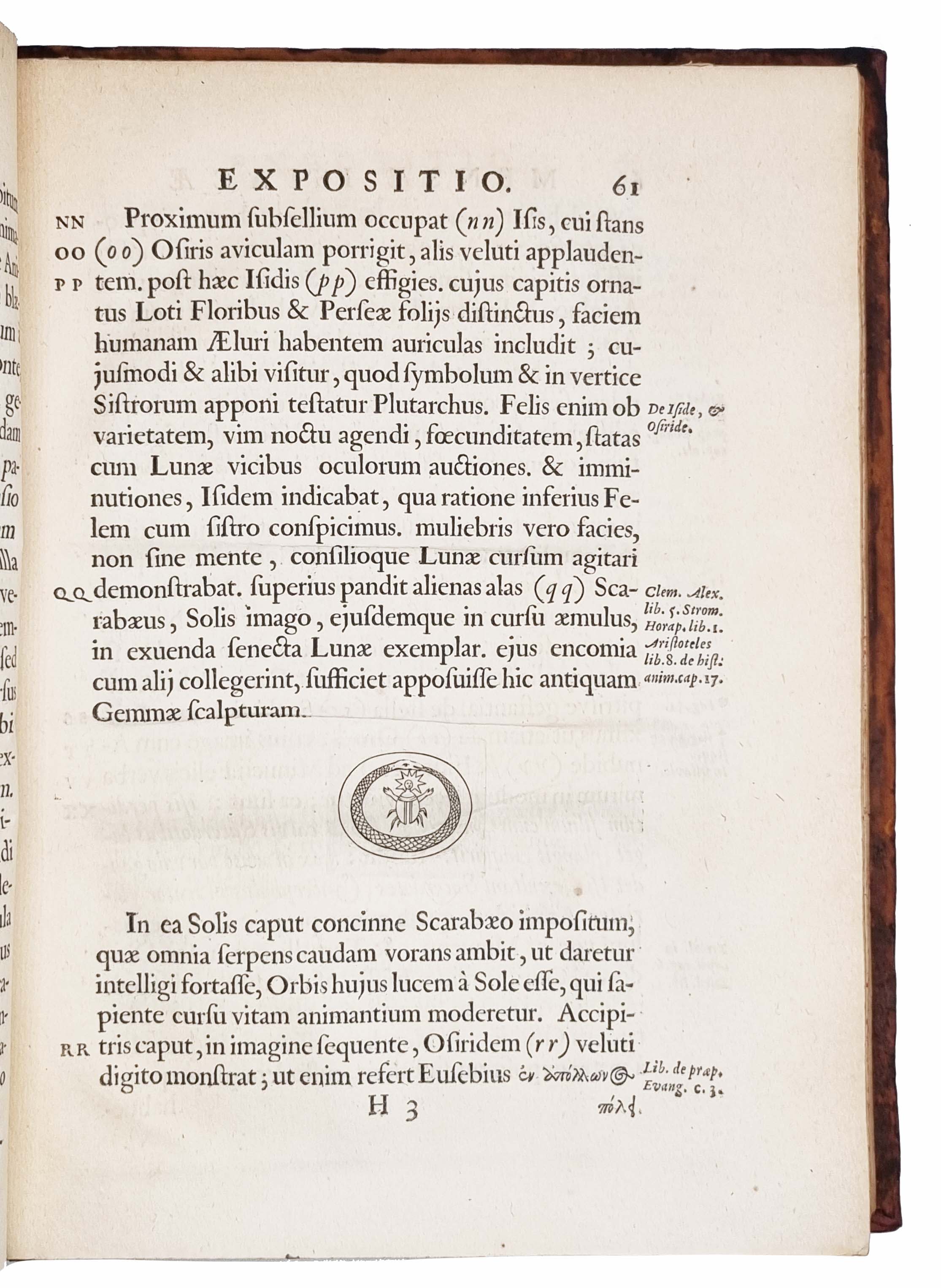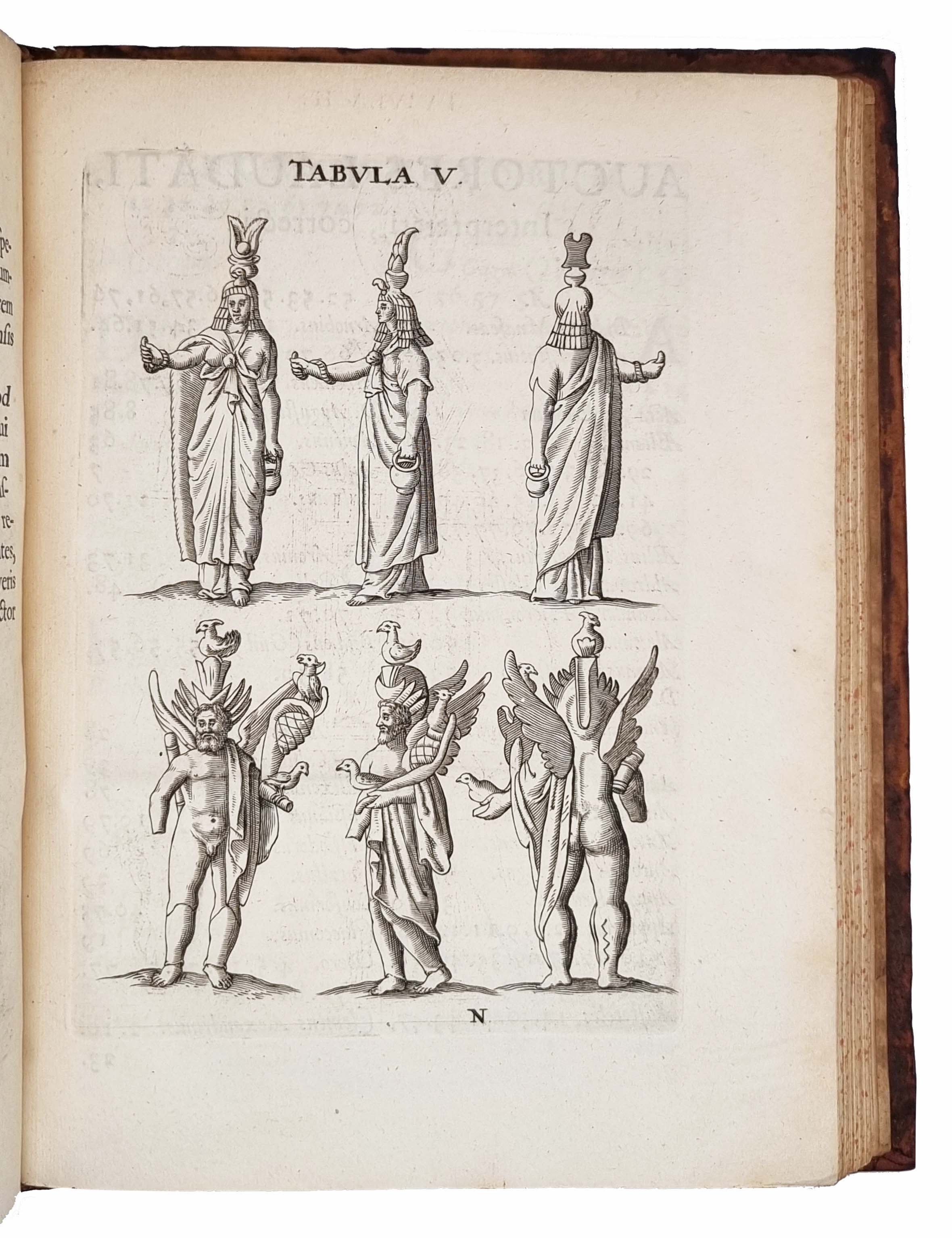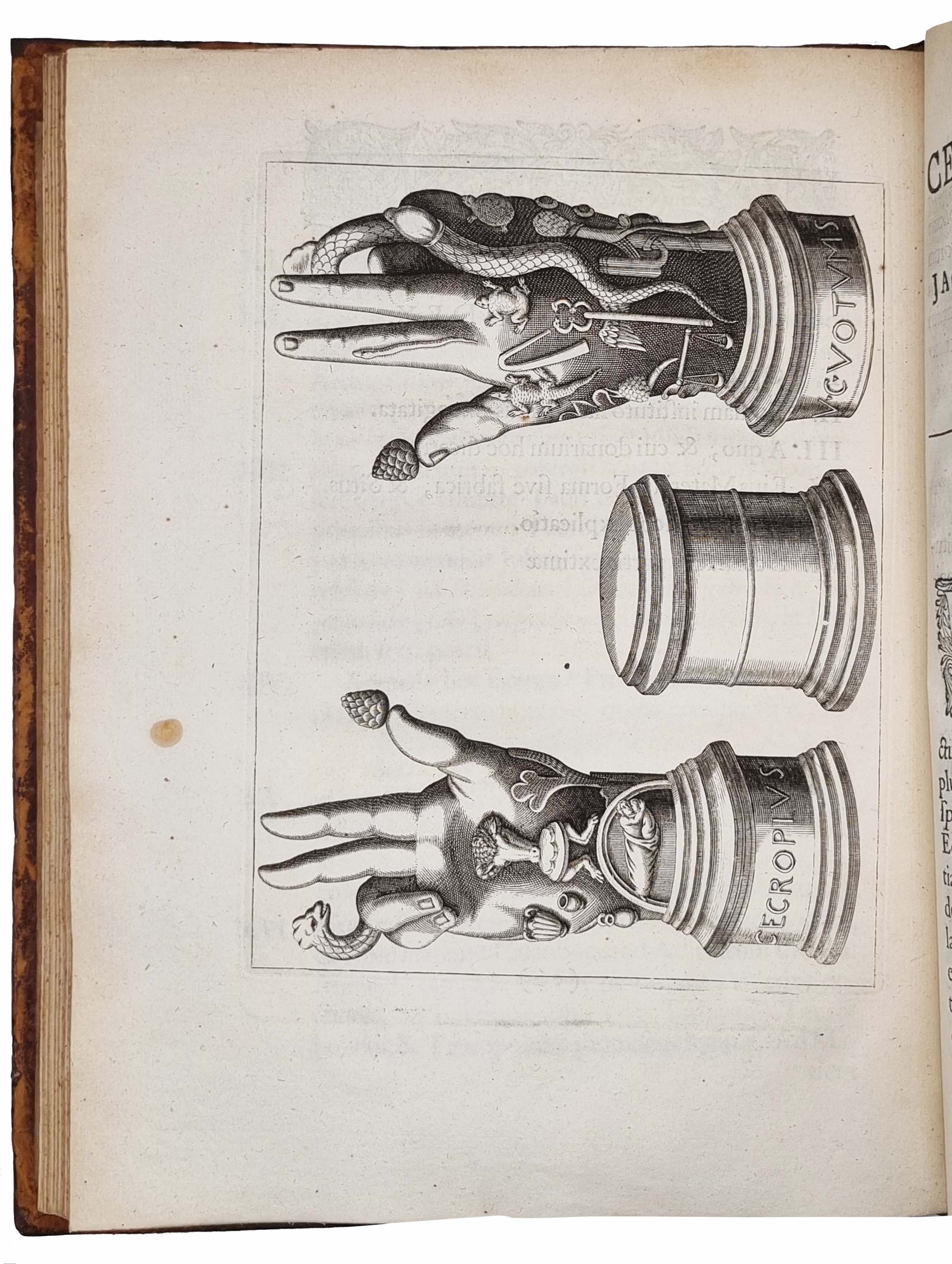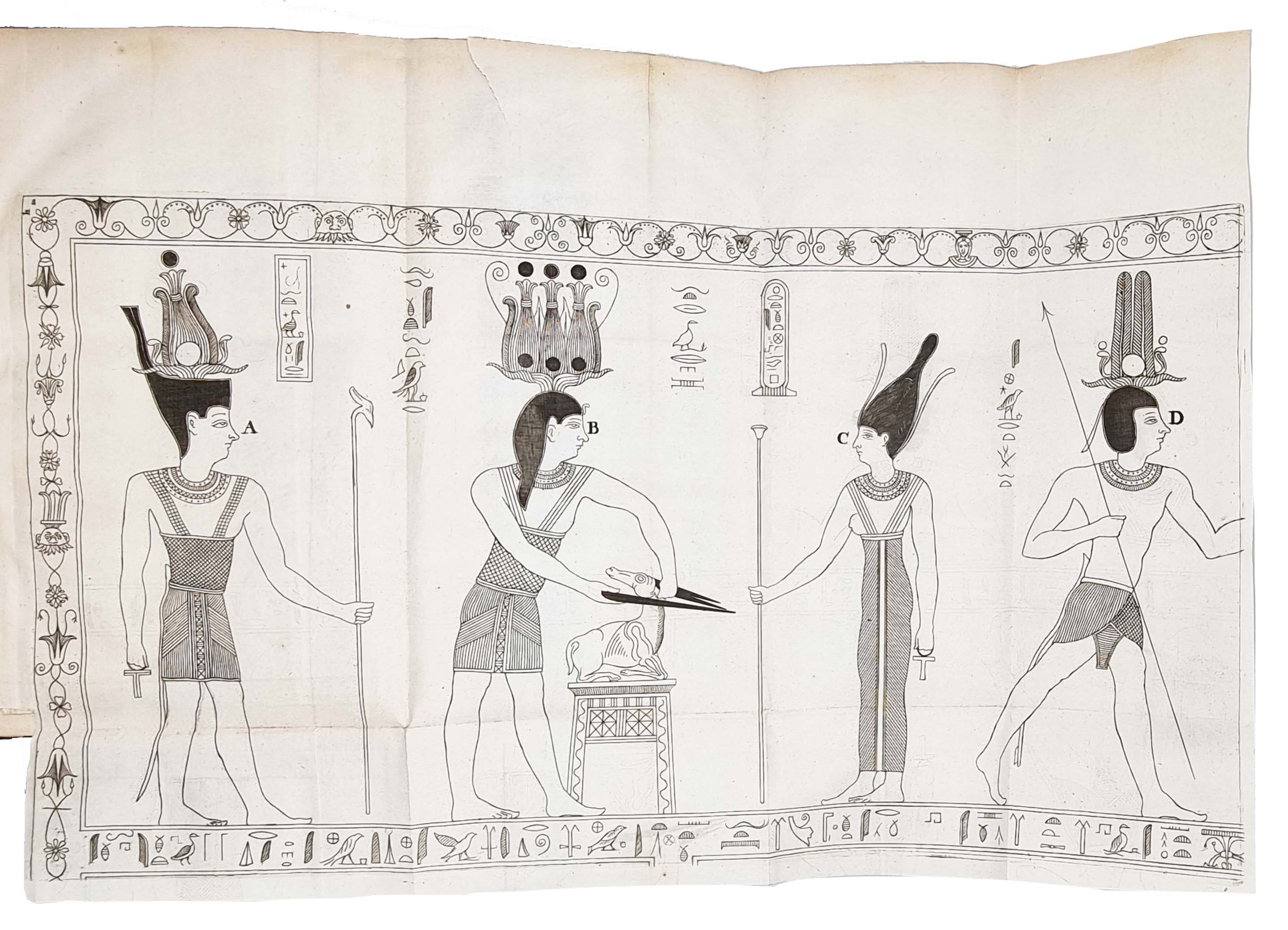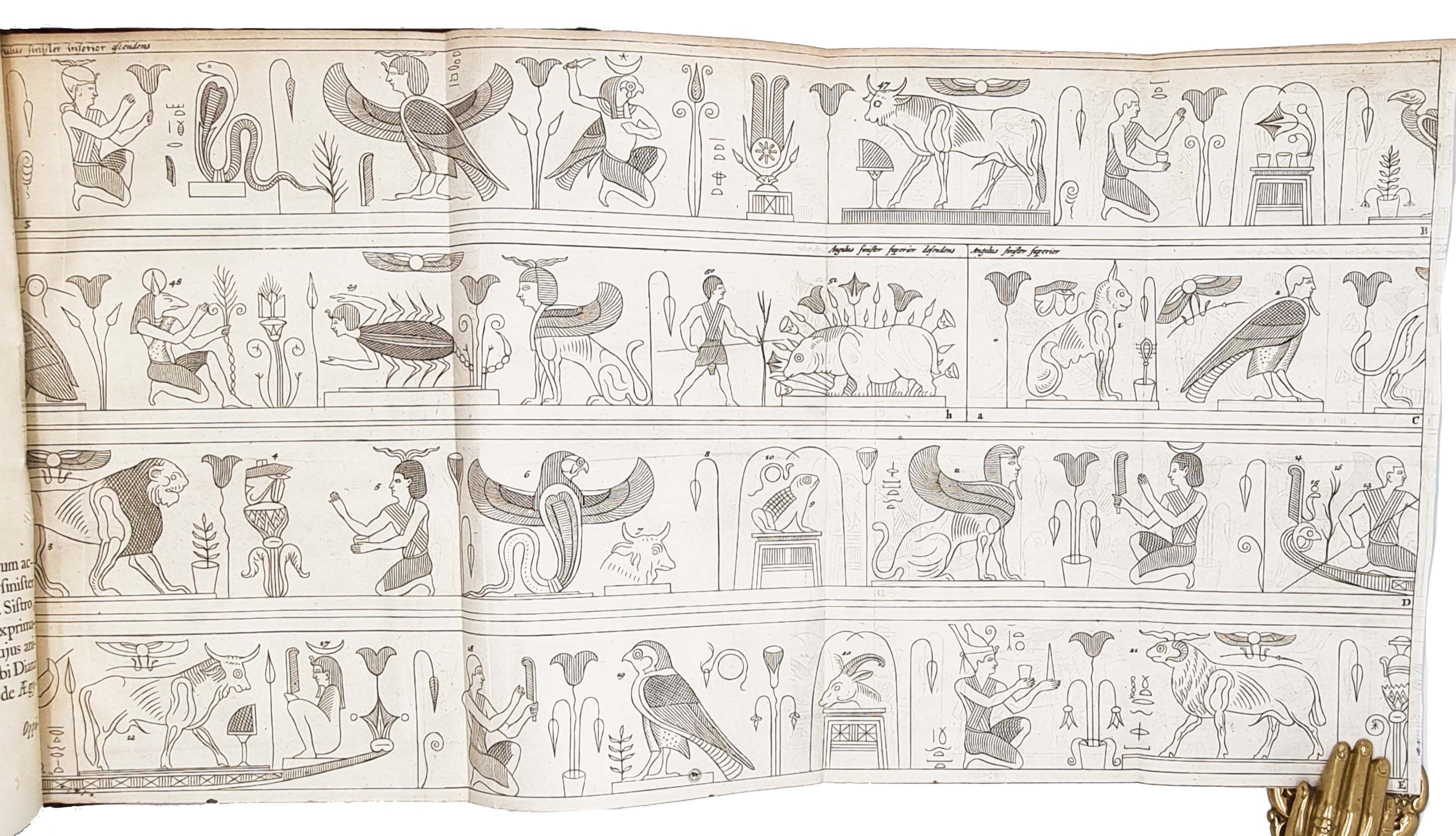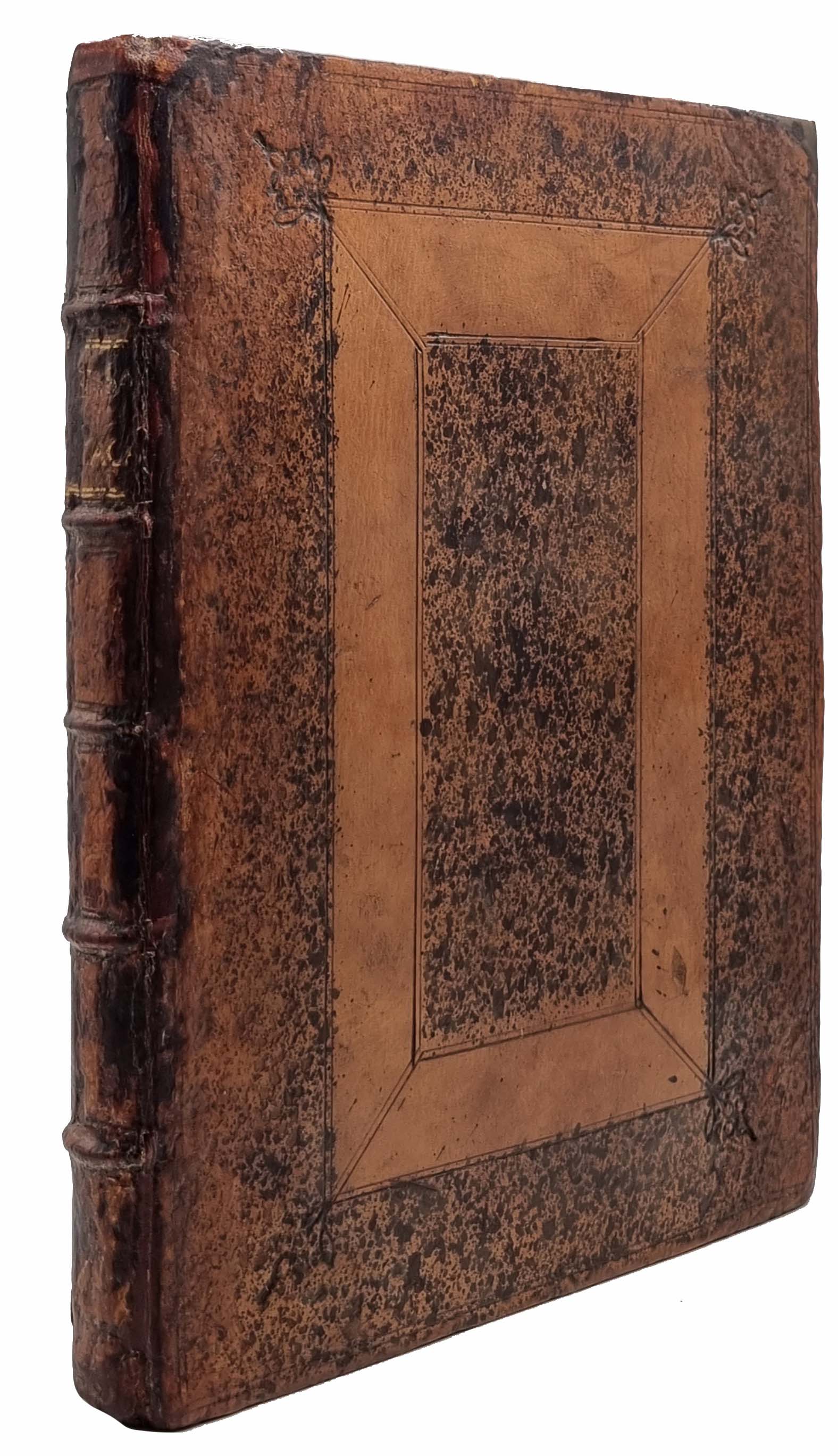PIGNORIA, Lorenzo. [and] PIGNORIA, Lorenzo; TOMASINI, G.F.
THE FLETCHER OF SALTOUN COPY
Mensa Isiaca. [and] Magnae Deum Matris Idaeae & Attidis Initia.
Amsterdam, A. Frisius, 1670; 1669.£2,250.00
4to., 2 parts in 1, second in 3 parts (continuous pagination), separate titles, half-title to II/3, I: pp. [10], 96, [12] + 12 ll. of plates; II: pp. [8], 24, [2], 27-96. Roman letter, little Italic or Greek. Engraved title by A. Blotelingh of artist painting Egyptian landscape, engraved printer’s device to printed titles, 12 engraved ll. of plates (11 folding), 8 full-page engraved plates, and 26 half-page or smaller engravings, all illustrating Egyptian antiquities, seals and signets, decorated initials and ornaments. Slight toning, minor clean tear to inner blank margin of pls 1, 2, 5 and 6 (last 3 extending to extreme inner blank margin of engraving), foxing to upper margin of final gathering. An excellent, clean copy in English panelled calf c.1700, expertly rebacked, original spine onlaid, covers double blind ruled, blind-stamped fleurons to outer corners of second border, raised bands, spine worn, all edges sprinkled red. C.1700 ‘P’ at foot of engraved title, ms ‘A Fletcher’ at head of first title, plates numbered to blank verso in a c.1700 hand (Fletcher’s?).
An excellent, clean copy, of illustrious provenance, of the ‘third and best edition’ (Brunet) of this famous work on Egyptian antiquities by the antiquary and collector Lorenzo Pignoria (1571-1631), lavishly illustrated with 12 superb plates after Enea Vico and, for the first time, with an additional part. This copy (‘Bib. Fletcheriana’, 028.28 Hist.) belonged to the Scottish writer and politician Andrew Fletcher of Saltoun (1655-1716), ‘the most learned man of his day’, and the owner of the largest private library in Scotland, with c.6,000 volumes.
First published in 1605, ‘Mensa Isiaca’ is a study of the elaborately decorated namesake tablet of bronze, enamel and silver acquired by Cardinal Bembo after the sack of Rome of 1527 and later by the Gonzaga in Mantua. Though now believed to be of 1st-century Roman, not Egyptian, origin, it soon began to inspire the study of hieroglyphs and ancient Egyptian cults; Valeriano mentioned it in his ‘Hieroglyphica’ and Kircher wrote about it in 1652. Pignoria’s work, the first scholarly study, ‘has been considered […] as the most valuable, both for the author’s purpose [not to interpret the tablet allegorically but using ancient sources] and for its historical information’ (Leospo, ‘Mensa Isiaca’, p.2). Pignoria was ‘willing to hazard an interpretation of the table’s symbols, but his identifications of individual figures were explicitly tentative, and he did not attempt to explain how they related to one another semantically’ (Stolzenberg, ‘Egyptian Oedipus’, p.46). The sources include Greek epigraphic inscriptions, ancient amulets and seals, many beautifully illustrated. The tablet is superbly portrayed in 11 large folding plates, based on those originally produced in 1559 by Vico. In 1600, Giovanni Franco had the plates copied and recut, and sold them as a collection of 11 plus the original t-p. According to Brunet, this edition includes one plate by Vico not originally present. The beautifully illustrated appendix is an index with commentaries on ancient amulets described by Kircher and Chifflet.
The second work, Pignoria’s ‘Magnae Deum matris Idaeae’, was first published separately in 1624 and is in its second edition. It is entirely devoted to the ancient Greek and Roman cult of Cybele and her consort Attis, represented wearing a Phrygian hat. A thorough compendium of ancient sources on the subject, it devotes a large section and two engravings to the bronze hand traditionally used for these cults. With the ritual bronze hand is concerned the following work, by Giacopo Filippo Tomasini (1597-1654), as it describes a specimen preserved in Cardinal Barberini’s ‘pinacotheca’. The final section is an account of Pignoria’s life, works (by and about him), ‘musaeum’ (i.e., collection of art and artefacts), including coins, statues and antiquities, and library. This included 50 Latin mss, ‘many printed books with marginalia by very learned men’, ‘a volume of autograph letters by various authors’ (i.e., Mattioli, Clusius, Dodoens, Tasso, etc.) and 2 vols of Cicero’s works from the library of Charles V.
| Language |
|---|
Out of stock


